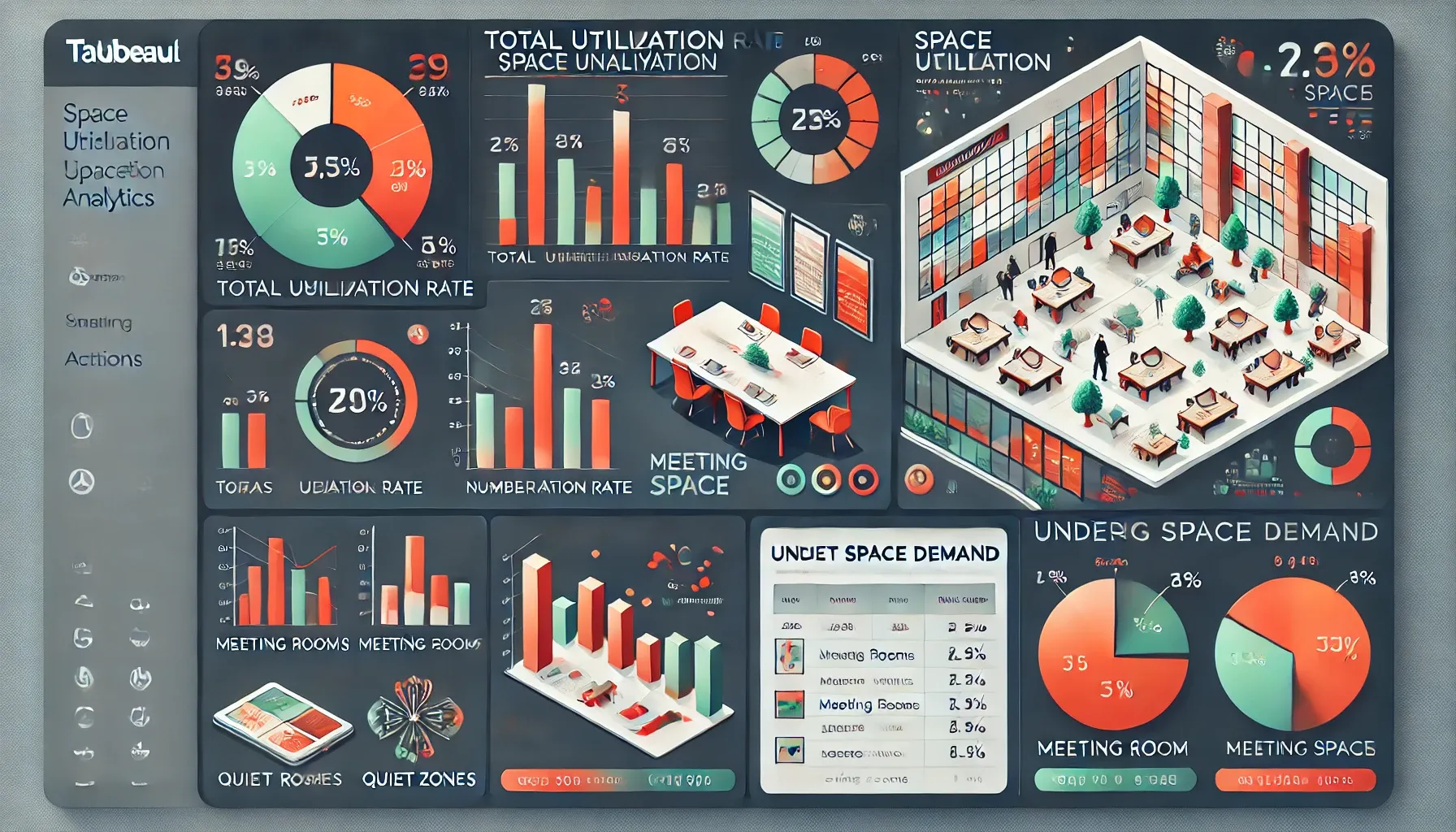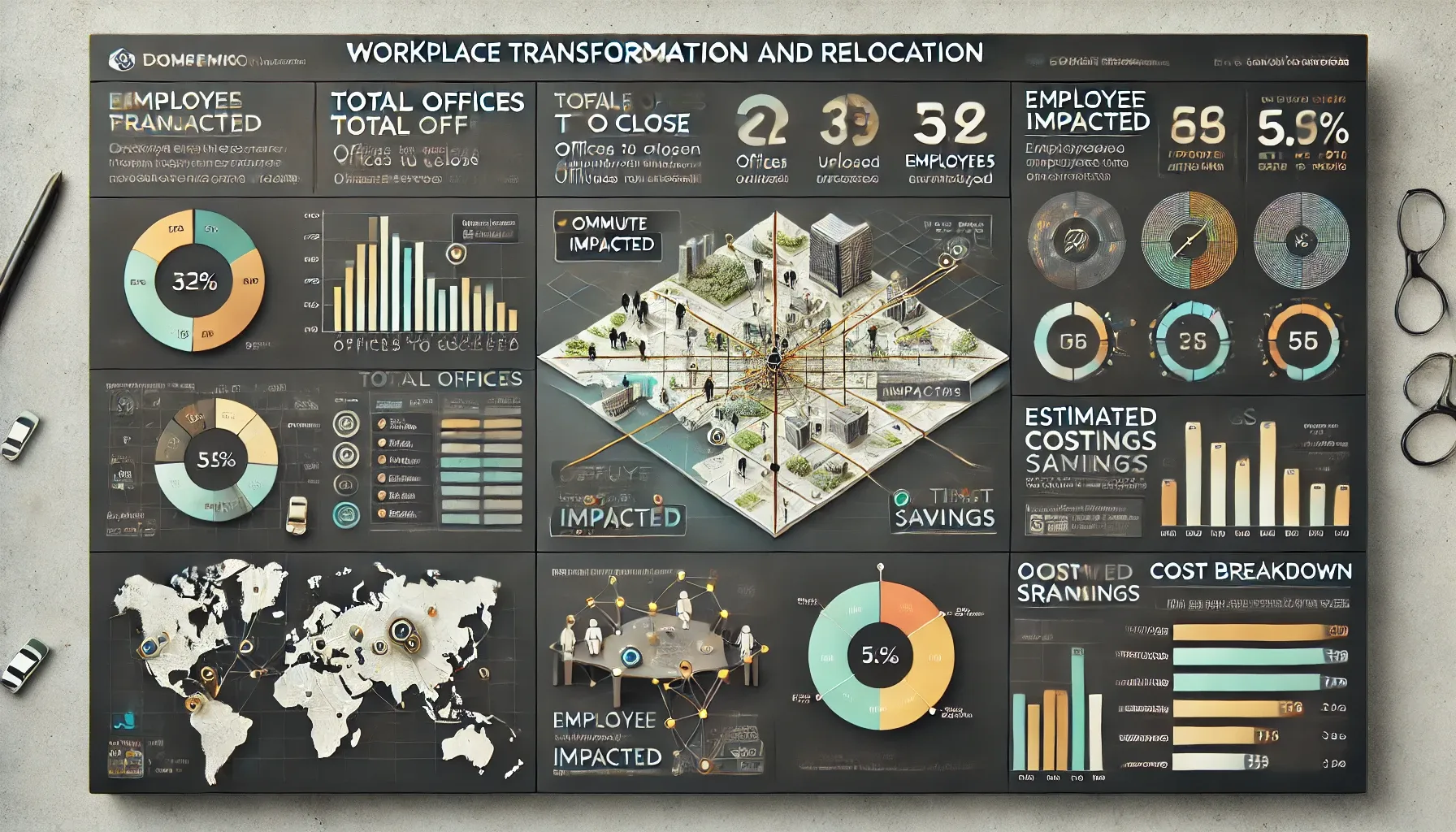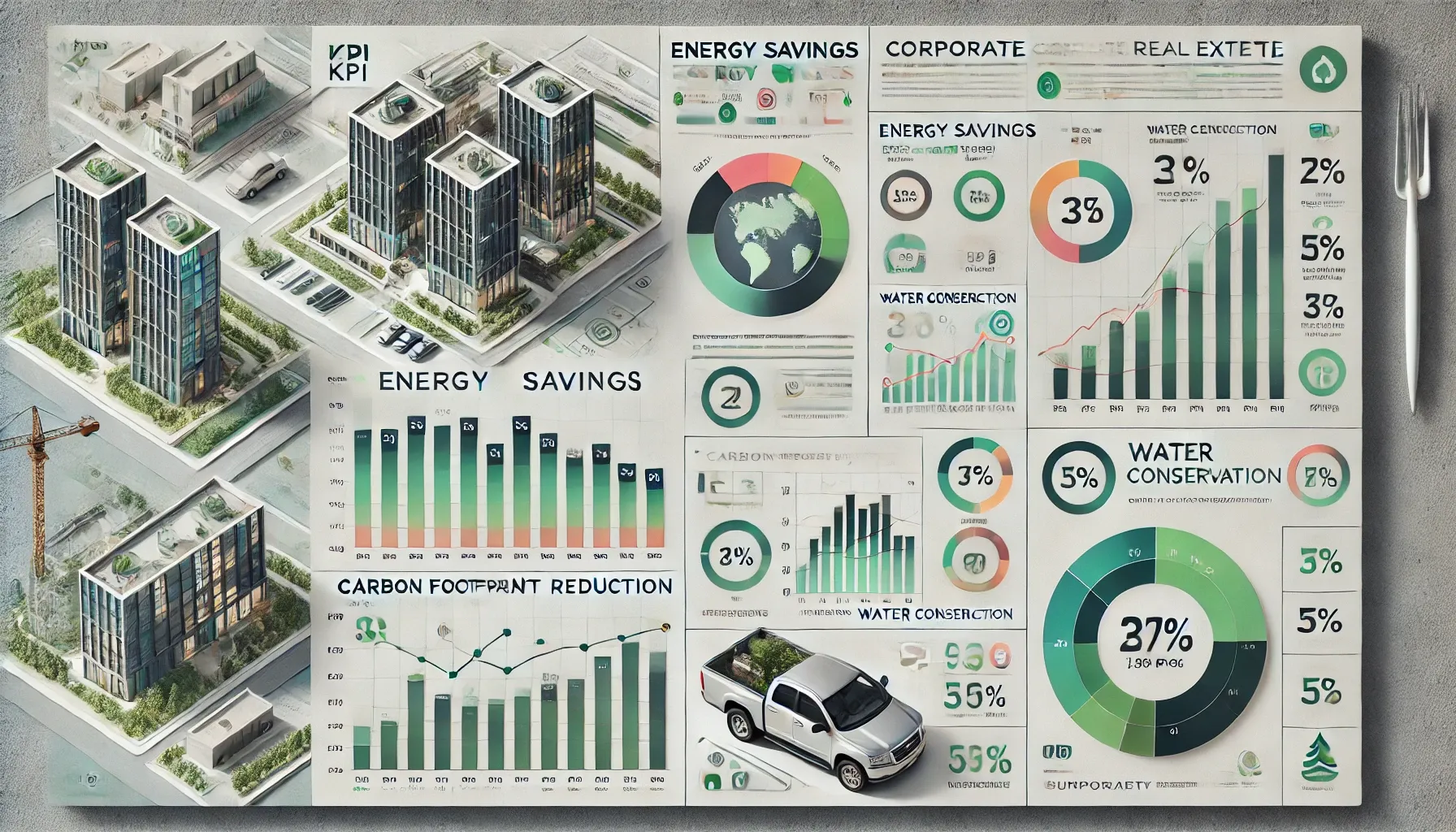The Role of BI in Real Estate

Real Estate Data: Where It Begins
Let's say you are the CEO of a global corporate giant. There are 100 properties your company owns across the globe. Of these, 80% are office spaces, while the rest include industrial warehouses, lands and other property types. Some of these properties are fully owned and others are leased, each with unique lease terms.
Just this much has already created a lot of lot data points - details about property names, locations, property type, size; financial metrics like rent and maintenance costs. But owning or managing properties is not just about keeping these records—it’s about ensuring your spaces are working for you, not against you.
For example, are your offices utilized efficiently? You wouldn’t want entire floors sitting empty, draining your resources, nor would you want overcrowded areas that make workspaces uncomfortable and unproductive. To answer these questions, you’d need granular data—the number of floors in each building, workstation and meeting room counts, the capacity of each floor, and real-time occupancy metrics.
Now consider the customer experience (CX) element. For employees, contractors, or visitors, the quality of their experience in your spaces matters. Are the facilities well-maintained? Are meeting rooms easy to book and equipped with what’s needed? Are cleaning schedules aligned with building usage patterns?
Then there are sustainability goals, which are no longer optional. To ensure your properties contribute to a greener future, you need to track and manage metrics such as carbon emissions, water usage, and energy consumption.
Facilities management is another critical piece of the puzzle. Every building requires functioning equipment, timely repairs, and preventive maintenance. Are work orders being completed on time? Are inspections happening as scheduled? Even a small oversight, like a leaky faucet, when multiplied across multiple properties, can lead to significant financial and environmental costs.
All of these elements are supported by data, lots and lots of data.
But here’s the challenge: while the data exists, it’s scattered across systems, siloed by geography, and often very difficult to manage.
This is why Business Intelligence (BI) becomes crucial.
Bringing BI into the Picture
Business Intelligence (BI) helps consolidate data from different sources and enables businesses to find answers to specific questions by turning data into insights, helping them make informed decisions. This ultimately gives them more control over their portfolio and ensures maximum profits.
I myself work as a Business Intelligence Specialist in a Corporate Real Estate company and I thought it would be best to explain the role of BI through examples of some of the recent projects I have worked on.
Space Utilization - Workplace Analytics

I created a dashboard that used data from building sensors to track how different spaces were used. These sensors captured data every time a person entered or exited a space, providing real-time, anonymous insights into utilization rate. This allowed us to see exactly how many people were in each space at any given time, helping us identify patterns in space utilization.
Personally, it was fascinating to work with such powerful data. I could clearly see how recent work culture has influenced office space usage. For example, the highest utilization was consistently on Tuesdays and Thursdays, reflecting a common work trend you’ll often see in London—people tend to work in the office more on these days.
The data also revealed insights like - meeting rooms weren’t always necessary in certain areas, while there was a strong demand for more quiet spaces to support focused work. By understanding these patterns, we were able to make informed recommendations—like reconfiguring underutilized areas or expanding overutilized spaces—ultimately helping to create a more productive and efficient work environment.
Workplace Transformation - Relocation & Occupancy Analytics

As the CEO of the company, after looking at the space utilization reports, let's say you've identified the opportunity to close four underutilized offices, aiming to reduce costs. But it's not that simple. You would need to consider the impact of this move on the employees as well as the business.
Employee Impact:
- Relocating employees to new offices will likely change their daily commutes, potentially increasing travel times and expenses. These changes could affect employee satisfaction, productivity, and retention, making it important to evaluate the implications thoroughly.
Business Considerations:
- Operational Synergies: Certain business units benefit from working in close collaboration and separating them across offices could negatively effect performance. You would need to identify these synergies to ensure that the new office locations continue supporting seamless operations.
- Cost Analysis: While closing underutilized offices can reduce overhead, you need to evaluate the costs associated with relocating employees, including potential compensation and the logistics of moving.
In this project, I used Google's Distance Matrix API to calculate real-time travel durations and distances from employees' home locations to both current and potential new office sites. This analysis helped assess the feasibility of the move by identifying employees who may be adversely affected by the move and helped evaluate additional travel costs.
The project also required strategic analysis, such as estimating the costs associated with employee turnover and conducting A/B testing to determine the most suitable new office locations. Additionally, I analyzed badge swipe data to understand occupancy levels among employees and contractors, enabling the company to accurately estimate space requirements for the new offices.
Sustainability Analytics

So far, your efforts as the CEO have focused on reducing operational costs and maximizing profits. While these are critical business priorities, the next step is to ensure that your property portfolio aligns with sustainability goals and adheres to environmental regulations.
To address these needs, I developed a sustainability dashboard to monitor critical metrics, including energy consumption, greenhouse gas (GHG) emissions, and water usage across all properties. This dashboard provided actionable insights by:
- Highlighting buildings with high energy consumption to prioritize efficiency upgrades.
- Pinpointing areas where emissions could be lowered through strategic initiatives.
- Targeting inefficient resource utilization to minimize waste and improve sustainability outcomes.
The dashboard also included features such as visual trends and benchmarking capabilities, enabling stakeholders to compare performance across properties and track progress over time. This ensured that sustainability efforts were data-driven and aligned with both environmental goals and business objectives.
Skills for BI Professionals in Real Estate
By now, it’s clear what type of data is generated in real estate and the kinds of projects you can expect to work on as a data professional in this field. Let’s wrap things up by creating a checklist of essential skills you’ll need to thrive as a BI expert in real estate:
1. Data Analysis and Visualization
- Proficiency in ETL tools like Alteryx.
- Strong coding skills in Python and SQL for data manipulation and analysis.
- Expertise in visualization tools such as Tableau or Power BI to present actionable insights.
2. Data Engineering
- Capability to structure, manage, and integrate large-scale datasets from diverse sources, ensuring data is accurate, accessible, and actionable.
3. Business Acumen
- A solid understanding of real estate operations to align BI projects with strategic business objectives and deliver value-driven insights.
4. Collaboration
- The ability to engage effectively with stakeholders across various service lines, ensuring alignment and clarity in delivering impactful solutions.
5. Innovative Mindset
- A knack for thinking outside the box, identifying opportunities to overlay data from different service lines in real estate to generate compounded benefits.
Closing
This article aimed to explain the data landscape in Corporate Real Estate and provide a glimpse into the type of BI projects you might work on in this field, drawn from my own experiences. I hope it sparked your curiosity and gave you a clearer sense of whether a career as a BI professional in real estate aligns with your aspirations. If it does, I trust the BI checklist has equipped you with valuable insights to guide your journey.

